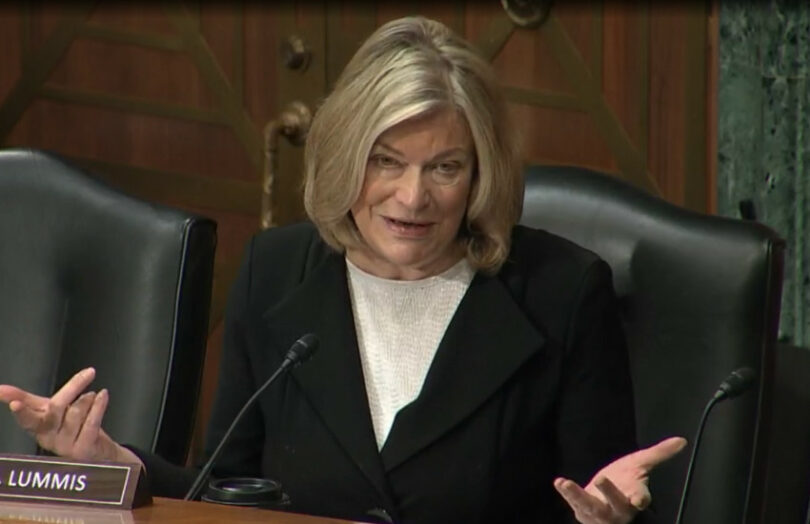Yesterday U.S. Senators Cynthia Lummis (Republican) and Kirsten Gillibrand (Democrat) released a bipartisan Bill, the Lummis-Gillibrand Payment Stablecoin Act. It addresses several of the contentious issues in the separate House Stablecoin Bill, which reportedly have been resolved. The new Bill provides a balance between Federal Reserve and State regulator involvement. A stablecoin issuer can only be owned by a predominantly financial business, ruling out the likes of Meta, Google, Amazon and X.
The Bill proposes to ban algorithmic stablecoins.
Various iterations of the older House Stablecoin Bill covered issues not directly related to stablecoins, such as CBDC and diversity. The Senate Bill substantially avoids this, with one exception.
It explicitly overturns the SEC’s SAB 121 accounting rule, which is blocking banks from providing crypto-asset custody. The wording of the accounting clause does not appear related to stablecoins in particular, simply mentioning custody of crypto assets.
The draft law provides for situations where potentially stablecoins grow exponentially. In that scenario, using short term Treasuries as stablecoin reserves could impact Treasury markets. In edge cases, the law allows several regulators, including the SEC, to have input regarding assets used as reserves where capital markets become stressed.
State regulator versus Federal Reserve
In the older House Bill, the balance between the state regulators and the Federal Reserve was the biggest bone of contention. The Senate Bill gives the Federal Reserve some level influence over all stablecoins.
It differentiates between payment stablecoins with a balance of less than $10 billion and national payment stablecoins with assets of $10 billion or more.
Non-depository trust companies can issue smaller stablecoins by chartering from a state regulator, and state regulators will consult with the Fed over a limited range of application standards. Once the trust has the go ahead it has to register with the Fed. Registration is a lower bar than authorization, and the Fed has 90 days to respond. If the Fed does nothing, the trust can issue a stablecoin. Requests for additional information won’t extend the 90-day deadline. If it wants to block the issuance the Fed Board has to pass a vote with a two thirds majority.
One major operational difference with the smaller stablecoin issuer is that a subcustodian is required to safeguard the stablecoin’s reserves.
Larger stablecoins require the issuer to apply to become a depository institution with the state banking regulator or the Comptroller of the Currency. Additionally, they have to request authorization from the Federal Reserve to become a national stablecoin issuer. The State regulator or Comptroller decides whether the application is complete, and in this case, the Fed has 180 days to review the application. It must provide an approval or rejection but the it only requires a normal majority vote of the Fed Board.
If existing banks choose to issue a stablecoin, they must have a dedicated subsidiary. However, UK proposals go further by insisting the subsidiary has a different brand.
Reserve requirements – cash diversification?
The stablecoin’s reserves must be held in cash, bank deposits, short term Treasury bills (90 days or less) and certain types of repo.
Our reading of the cash clause would mean that a stablecoin could not hold large balances with any one bank unless it gets full insurance coverage. Federal insurance is usually limited to $250,000 per account. The text states, “deposits in an insured depository institution shall not exceed the limit of deposit or share insurance available for that account.”
This likely is a reaction to the collapse of Silicon Valley Bank. It held $3.3 billion of USDC reserves, resulting in the stablecoin losing its peg until the bailout announcement.
The EU also encouraged diversifying deposits, but its purpose was to prevent bank instability rather than customer protection, so the limits are far higher.
Repurchase agreements (repo) must have a maturity of less than seven days, and the collateral must be Treasuries with a maturity of one year or less. Additional requirements include approved central clearing.
Other stablecoin features include reserves of more than 100%, redemption within one day and no commingling of assets with the issuer’s. Reserves must not be pledged or rehypothecated, apart from repo.
How it impacts the major US stablecoin issuers
We couldn’t help but consider the impact on the incumbent stablecoin issuers. The big three onshore issuers are Circle, Paxos (also for PayPal) and Gemini. While Circle has by far the largest balance ($32.7 bn), it is arguably the least regulated, as both Paxos and Gemini are state-registered trust companies.
If this law passes, Circle must become a depository institution. Given that both Paxos and Gemini have assets under $10 billion, they can remain state trusts and would simply have to register with the Fed. However, they could choose to become depository institutions.
One fly in the ointment for Paxos is the custody aspect. We believe it currently acts as custodian, whereas the Bill would require it to use a subcustodian.






